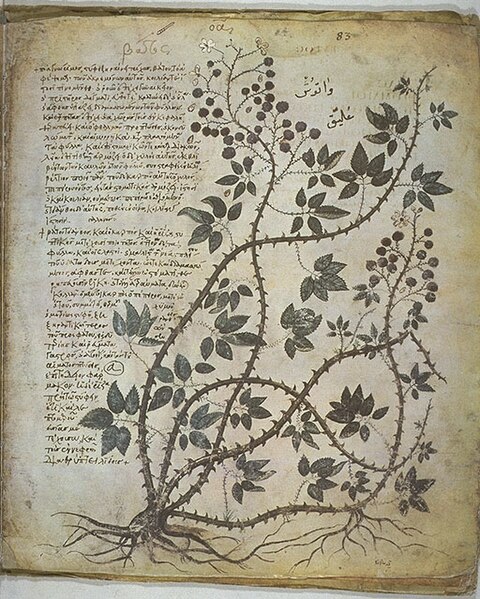The Vienna Dioscurides or Vienna Dioscorides is an early 6th-century Byzantine Greek illuminated manuscript of an even earlier 1st century AD work, De materia medica by Pedanius Dioscorides in uncial script. It is an important and rare example of a late antique scientific text. After residing in Constantinople for just over a thousand years, the text passed to the Holy Roman Emperor in Vienna in the 16th century, a century after the city fell to the Ottoman Empire.
A gallery of birds from folio 483v of the Vienna Dioscorides
Portrait of Anicia Juliana, for whom the book was made, flanked by Megalopsychia and Phronesis (detail from folio 6v)
Folio 83r Rubus fruticosus (bramble)
Folio 3v, seven physicians
De materia medica is a pharmacopoeia of medicinal plants and the medicines that can be obtained from them. The five-volume work was written between 50 and 70 CE by Pedanius Dioscorides, a Greek physician in the Roman army. It was widely read for more than 1,500 years until supplanted by revised herbals in the Renaissance, making it one of the longest-lasting of all natural history and pharmacology books.
Cover of an early printed version, Lyon, 1554
Dioscorides receives a mandrake root. Vienna Dioscurides manuscript, early 6th century.
Blackberry. Vienna Dioscurides, early 6th century
Mandrake (written 'ΜΑΝΔΡΑΓΟΡΑ' in Greek capitals). Naples Dioscurides, 7th century.







